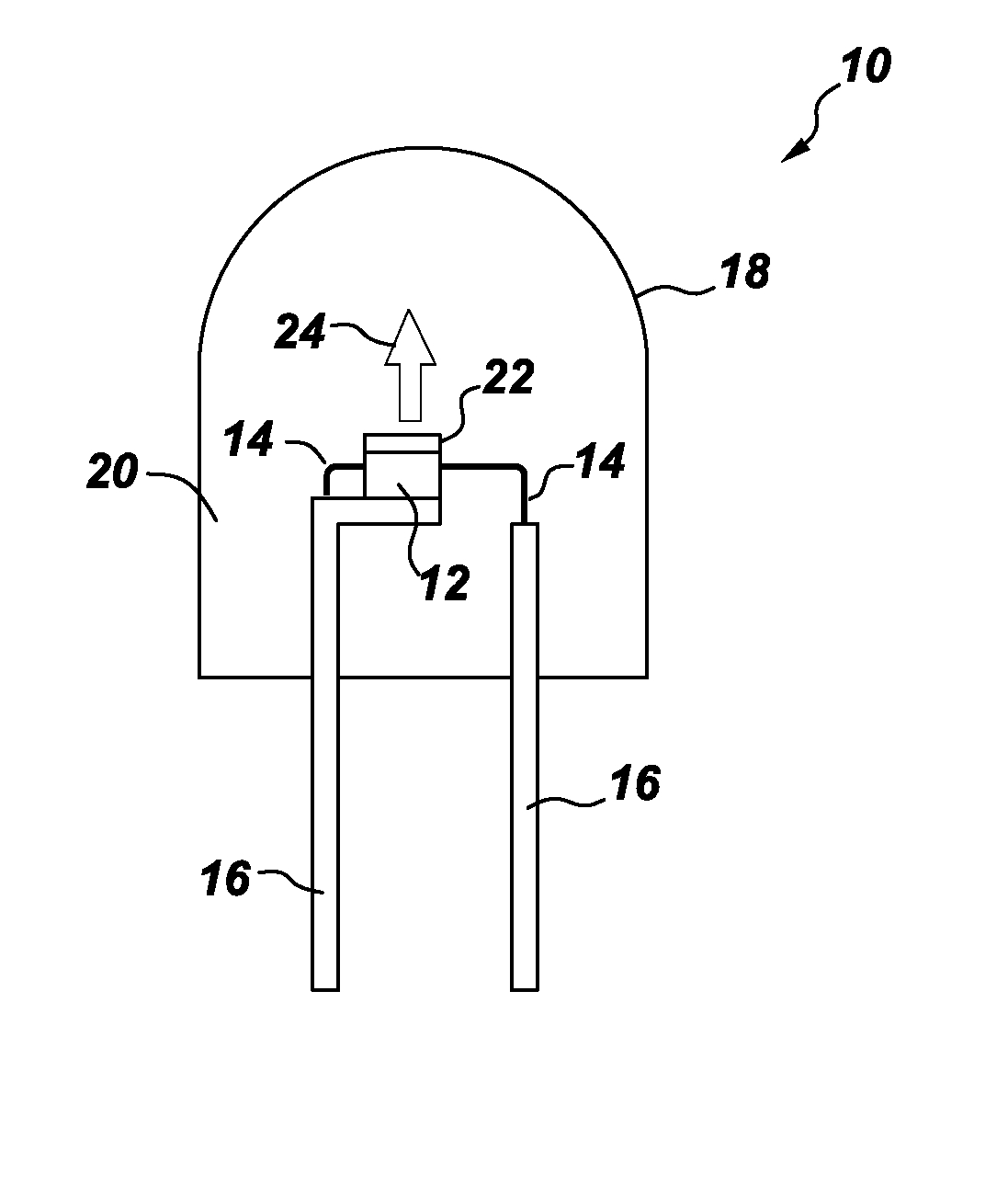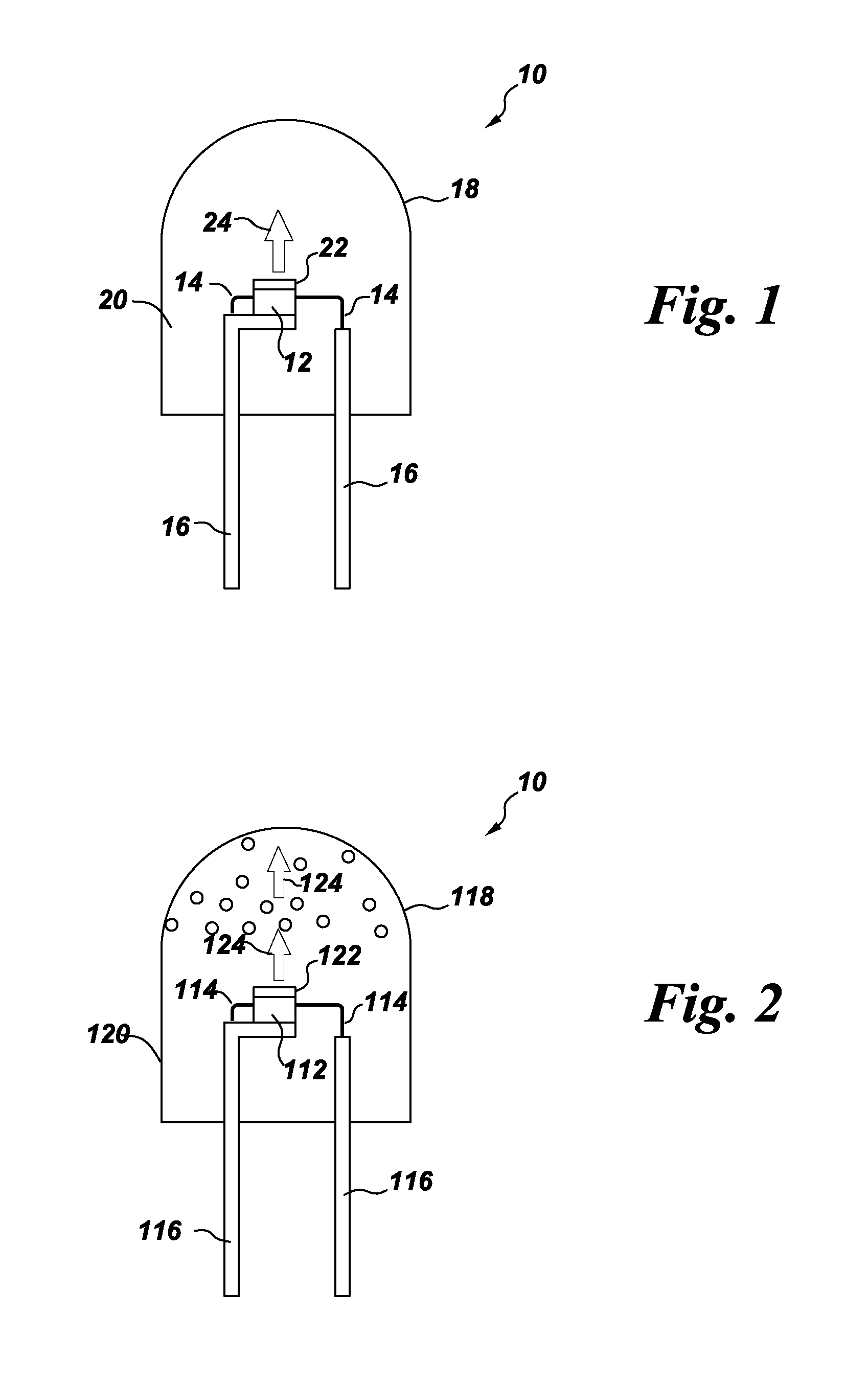Processes for preparing color stable manganese-doped phosphors
a technology of color stable manganese and phosphor, which is applied in the direction of discharge tube luminescnet screens, sustainable buildings, lighting and heating apparatus, etc., can solve the problems of limiting the use of commercial systems requiring long-term stability under operating conditions, and achieve the effect of improving the color stability of mn+4 doped phosphor
- Summary
- Abstract
- Description
- Claims
- Application Information
AI Technical Summary
Benefits of technology
Problems solved by technology
Method used
Image
Examples
examples
General Procedures
Annealing Procedure
[0042]The PFS phosphor was placed in a furnace chamber. The furnace chamber was evacuated using a mechanical pump and purged multiple times with nitrogen and nitrogen, fluorine mixtures. After several pump and purge cycles, the furnace chamber was filled with an atmosphere containing 20% fluorine gas and 80% nitrogen gas to a pressure of about 1 atmosphere. The chamber was then heated to the desired anneal temperature. After holding for about 8 hours, the chamber was cooled to room temperature. The fluorine nitrogen mixture was evacuated, the chamber was filled and purged several times with nitrogen to ensure the complete removal of fluorine gas before opening the chamber.
Preparation of Treatment Solutions
[0043]Aqueous solutions containing HF were prepared using 48% HF (w / w) and solutions containing H2SiF6 were prepared using 35% H2SiF6 (w / w). Where K2SiF6 was used, it was added to the solution which was stirred for 30 minutes after the addition,...
examples 1-7
[0048]In Examples 1-5, the as-synthesized PFS phosphor (without heat treatment) were treated with aqueous solutions as shown in Table 1. In Examples 6 and 7, the PFS phosphor was annealed under a fluorine atmosphere before treatment with the hexafluorosilicic acid solutions shown in Table 1.
TABLE 1HF, mlH2SiF6, mlK2SiF6, gComparativeExample No.1NANANA22601.4Example No.12061.4213131.436201.440261.450260ComparativeExample No.3NANANA4261.4Example No.60261.470260
[0049]The phosphors of Examples 1-7 and Comparative Examples 1-4 were subjected to HHTH conditions and evaluated for laser damage. Results are shown in Table 2. For these experiments, plaque measurements of the powder had a standard deviation of 0.6% for absorbance measurements (Abs.), 1.7% for quantum efficiency measurements (QE) and 2% for high temperature, high humidity (HTHH) measurements. The standard deviation for measuring the quantum efficiency and laser damage of PFS when mixed in a silicone and measured in an integrati...
example 8
X-Ray Photoelectron Spectroscopy
[0051]Table 3 shows the results of XPS measurements, which provide elemental analysis of the surface of the powder and has a detection limit of about 0.1 atomic %. In agreement with the plaque absorbance measurements, XPS provides further evidence that the surface [Mn] decreases upon treatment to the detection limits of the measurement system. In addition, surface carbon and oxygen are also reduced upon treatment.
TABLE 3% C% O% F% K% Si% MnComp. Ex. 112.81.452.120.812.60.21Ex. No. 41.80.661.523.013.00.06Ex. No. 32.00.662.122.412.70.07Comp. Ex. 26.01.058.321.613.10.03
PUM
| Property | Measurement | Unit |
|---|---|---|
| color stability | aaaaa | aaaaa |
| charge | aaaaa | aaaaa |
| temperature | aaaaa | aaaaa |
Abstract
Description
Claims
Application Information
 Login to View More
Login to View More - R&D
- Intellectual Property
- Life Sciences
- Materials
- Tech Scout
- Unparalleled Data Quality
- Higher Quality Content
- 60% Fewer Hallucinations
Browse by: Latest US Patents, China's latest patents, Technical Efficacy Thesaurus, Application Domain, Technology Topic, Popular Technical Reports.
© 2025 PatSnap. All rights reserved.Legal|Privacy policy|Modern Slavery Act Transparency Statement|Sitemap|About US| Contact US: help@patsnap.com



